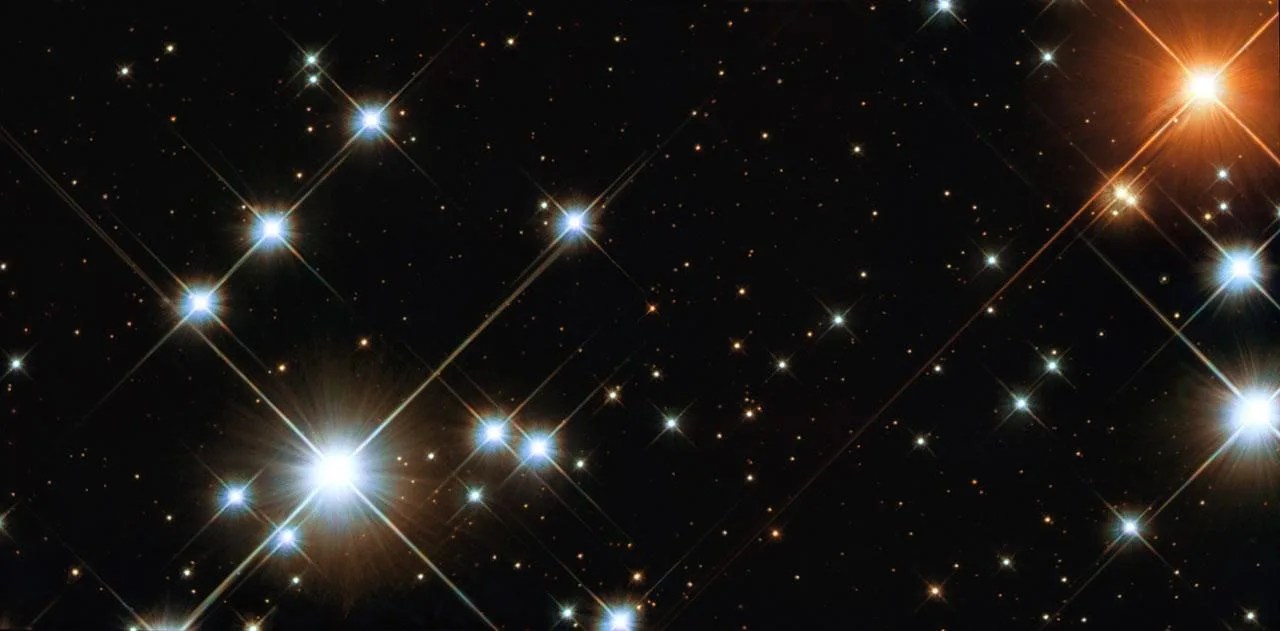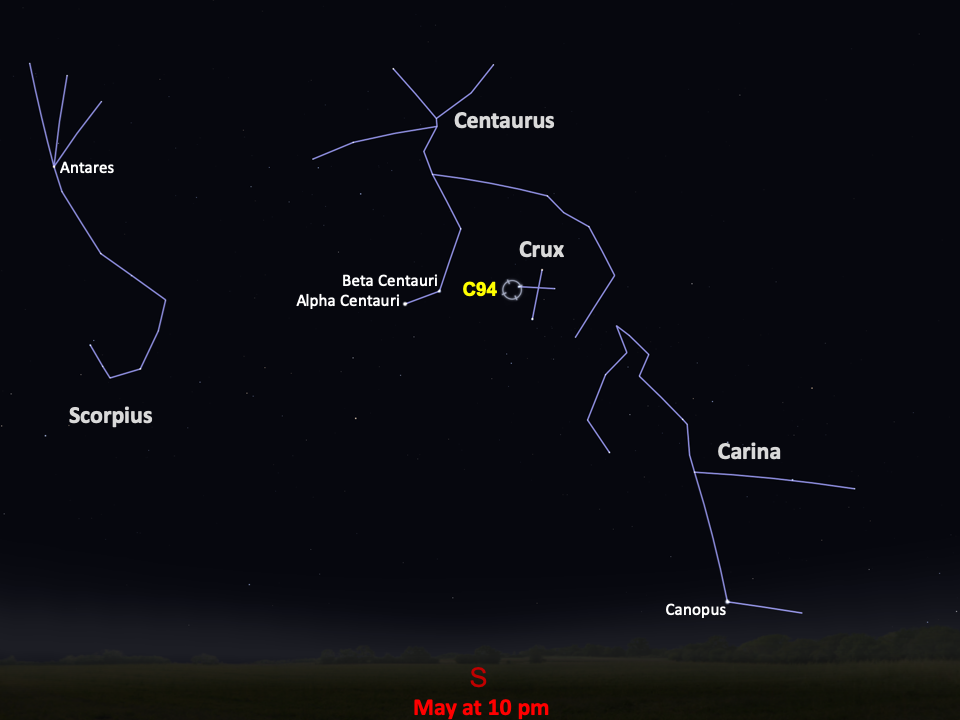Caldwell 94
This open cluster is a relative youngster at about 16 million years old.
Distance
6,500 light-years
Apparent Magnitude
4.2
constellation
Crux
object type
Open Cluster

Star clusters are sometimes held together tightly by gravity, as is the case with the densely packed crowds of hundreds of thousands of stars called globular clusters. Other times, they can be more loosely bound, irregularly shaped groupings of up to several thousand stars. While globular clusters are some of the most ancient members of the galaxy, open clusters are relatively young. This Hubble image features stars at the center of Caldwell 94, an open cluster that is only about 16 million years old.

Just like old school friends that drift apart after graduation, the stars in an open cluster only remain together for a limited time. They gradually disperse into space, pulled away by the gravitational tugs of other passing clusters and clouds of gas. Most open clusters dissolve within a few hundred million years, whereas the more tightly bound globular clusters can exist for billions of years.
Caldwell 94, also cataloged as NGC 4755 and commonly called the Jewel Box cluster, is a spartan collection of just over 100 stars. The cluster is about 6,500 light-years away from Earth, which means that the light we see from it today was emitted before the Great Pyramids in Egypt were built. Caldwell 94 was targeted for Hubble observation because open star clusters make excellent astronomical laboratories. The stars may have different masses, but all are at about the same distance, move in the same general direction, and may have approximately the same age and chemical composition since they formed together in a massive cloud of gas and dust.
Hubble’s image of Caldwell 94, taken with the Wide Field and Planetary Camera 2, was the first of any open cluster in our galaxy recorded in infrared, visible, and ultraviolet light. Scientists had never before had the opportunity to explore open star clusters over this range of wavelengths, so Hubble’s observations are helping to broaden our understanding of stellar astrophysics. The stars in the cluster can be studied and compared to find out more about stellar evolution, the ages of clusters, and much more.
The cluster, which was discovered by French astronomer Nicolas-Louis de Lacaille in 1752, is found in the constellation Crux and is best viewed in the autumn from the Southern Hemisphere. It is only visible to those in the Northern Hemisphere who are far enough south to see the Southern Cross. With a magnitude of 4.2, Caldwell 94 is visible to the naked eye, but without magnification it will masquerade as a single star. Binoculars will refine the cluster into its separate members, while a telescope will provide an even more spectacular view of Caldwell 94’s colorful stellar jewels.
For more information about Hubble’s observations of Caldwell 94, see:
Opening Up a Colorful Cosmic Jewel Box

Glossary
Globular Cluster - A spherical group of stars that are gravitationally bound to each other, with most of the stars concentrated at the cluster’s center.
Magnitude - The brightness of an astronomical object, represented by a number; bright objects have low numbers on the magnitude scale, while dim objects have high numbers.
Open Cluster - A group of stars loosely bound by gravity, destined to be short lived because the gravitational interactions between members are weak enough that stars can be drawn away from the cluster by stronger gravitational forces.
Explore Hubble's Caldwell Catalog
The following pages contain some of Hubble’s best images of Caldwell objects.

Caldwell 1
Also known as NGC 188, this group of stars formed from a large cloud of gas making the stars roughly…

Caldwell 2
This shell of gas is expanding outward, away from the dying star within.

Caldwell 3
This barred spiral galaxy was first spotted by British astronomer William Herschel in April 1793 in the constellation Draco.




